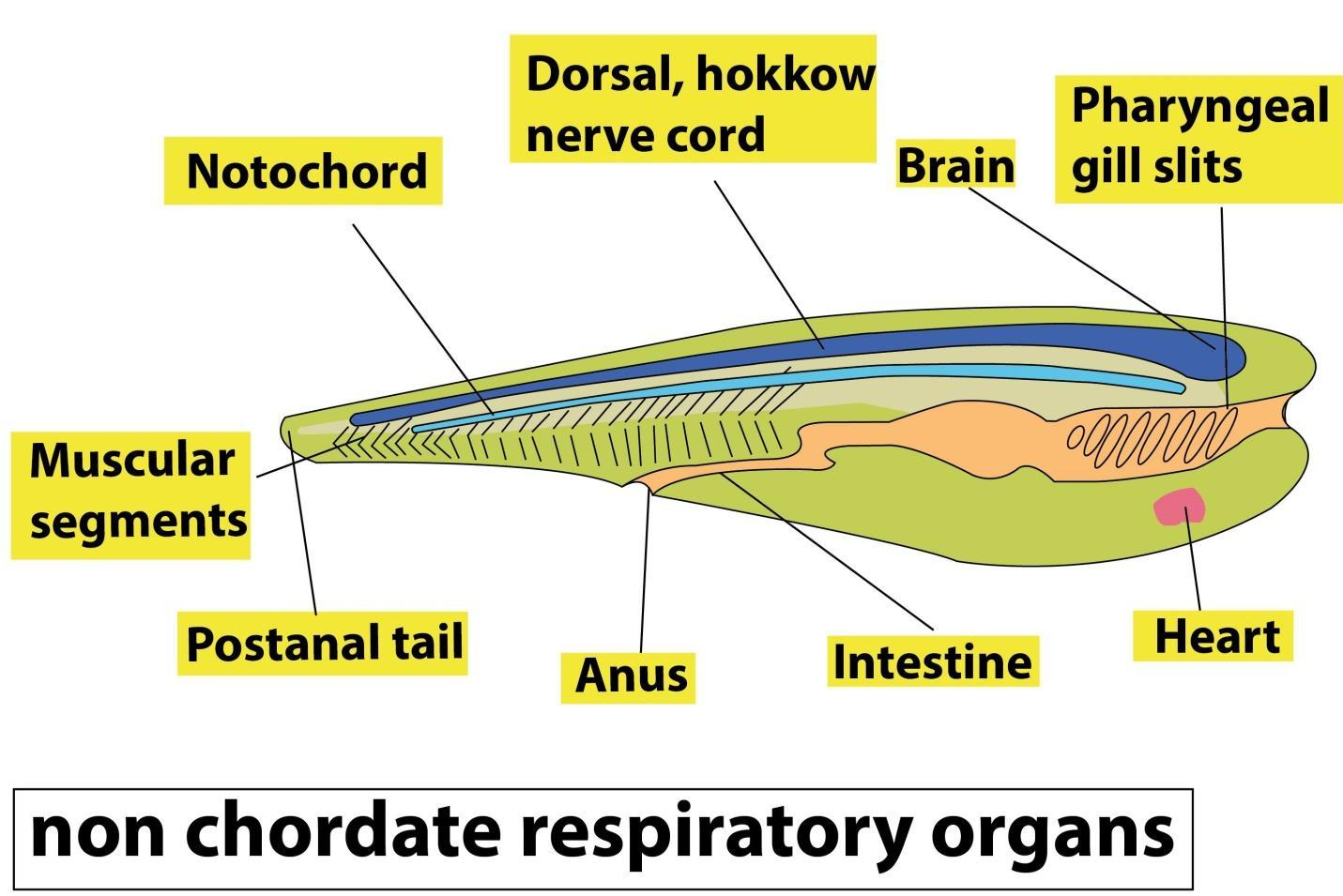
Describe the respiratory organs of non chordates.
Answer
570.9k+ views
Hint: Respiratory organs are crucial for the gaseous exchange. They typically have a greater rate of gaseous exchange per unit area than the overall body surface. Thus, we'll say that viscus could even be a neighborhood or special region of the body or could even be an organ particularly meant for this purpose.
Complete answer:
Non-chordates use different organs for respiration. The organs may differ in their structure but all the organs are given an outsized surface of contact with the encircling environment and are they're richly given blood vessels and capillaries .i.e., cardiovascular system which ensures rapid gaseous exchange between the external environment and thus the blood and whereas the external environment is usually water specifically for non chordates. And when it's air, there's a skinny film of water covering the respiratory surface, and the exchange of gases takes place through this aqueous film. The respiratory organs which add water are gills; whereas, Gills are common for the aquatic annelids, molluscs, and arthropoda. And aside from these, they use the tracheal system and skin for respiration.
Gills are thin tissue filaments that are folded and highly branched. When water passes over the gills, the dissolved oxygen within the water rapidly diffuses across the gills into the bloodstream. The circulatory system can then carry the oxygenated blood to the opposite parts of the body. In animals that contain coelomic fluid rather than blood, oxygen diffuses across the gill surfaces into the coelomic fluid. Insect respiration is independent of its circulatory system; therefore, the blood doesn't play a flash role in oxygen transport.
Non-chordates are animals without a notochord that have the rod- like elastic structure that supports their structure. This phylum consists of a slight group of worm- like, marine species with an organ- system level of organization.
The members Porifera, Coelenterata, Platyhelminthes, Aschelminthes, Annelida, Ctenophora Arthropoda, Mollusca, Echinodermata, and Hemichordata fall under Non- chordates.

Note:
- They are cylindrical, triploblastic, coelomate, or pseudocoelomate animals.
- Most of the time, sexes cannot be distinguished among the members.
- Modes of reproduction involve sexual and asexual
- Fertilization is external, though internal fertilization also occurs in some species.
- The body of non-chordates generally includes an open, quiet circulatory system.
Complete answer:
Non-chordates use different organs for respiration. The organs may differ in their structure but all the organs are given an outsized surface of contact with the encircling environment and are they're richly given blood vessels and capillaries .i.e., cardiovascular system which ensures rapid gaseous exchange between the external environment and thus the blood and whereas the external environment is usually water specifically for non chordates. And when it's air, there's a skinny film of water covering the respiratory surface, and the exchange of gases takes place through this aqueous film. The respiratory organs which add water are gills; whereas, Gills are common for the aquatic annelids, molluscs, and arthropoda. And aside from these, they use the tracheal system and skin for respiration.
Gills are thin tissue filaments that are folded and highly branched. When water passes over the gills, the dissolved oxygen within the water rapidly diffuses across the gills into the bloodstream. The circulatory system can then carry the oxygenated blood to the opposite parts of the body. In animals that contain coelomic fluid rather than blood, oxygen diffuses across the gill surfaces into the coelomic fluid. Insect respiration is independent of its circulatory system; therefore, the blood doesn't play a flash role in oxygen transport.
Non-chordates are animals without a notochord that have the rod- like elastic structure that supports their structure. This phylum consists of a slight group of worm- like, marine species with an organ- system level of organization.
The members Porifera, Coelenterata, Platyhelminthes, Aschelminthes, Annelida, Ctenophora Arthropoda, Mollusca, Echinodermata, and Hemichordata fall under Non- chordates.

Note:
- They are cylindrical, triploblastic, coelomate, or pseudocoelomate animals.
- Most of the time, sexes cannot be distinguished among the members.
- Modes of reproduction involve sexual and asexual
- Fertilization is external, though internal fertilization also occurs in some species.
- The body of non-chordates generally includes an open, quiet circulatory system.
Recently Updated Pages
Master Class 12 Business Studies: Engaging Questions & Answers for Success

Master Class 12 Economics: Engaging Questions & Answers for Success

Master Class 12 English: Engaging Questions & Answers for Success

Master Class 12 Maths: Engaging Questions & Answers for Success

Master Class 12 Social Science: Engaging Questions & Answers for Success

Master Class 12 Chemistry: Engaging Questions & Answers for Success

Trending doubts
What is meant by exothermic and endothermic reactions class 11 chemistry CBSE

Which animal has three hearts class 11 biology CBSE

10 examples of friction in our daily life

One Metric ton is equal to kg A 10000 B 1000 C 100 class 11 physics CBSE

1 Quintal is equal to a 110 kg b 10 kg c 100kg d 1000 class 11 physics CBSE

Difference Between Prokaryotic Cells and Eukaryotic Cells




